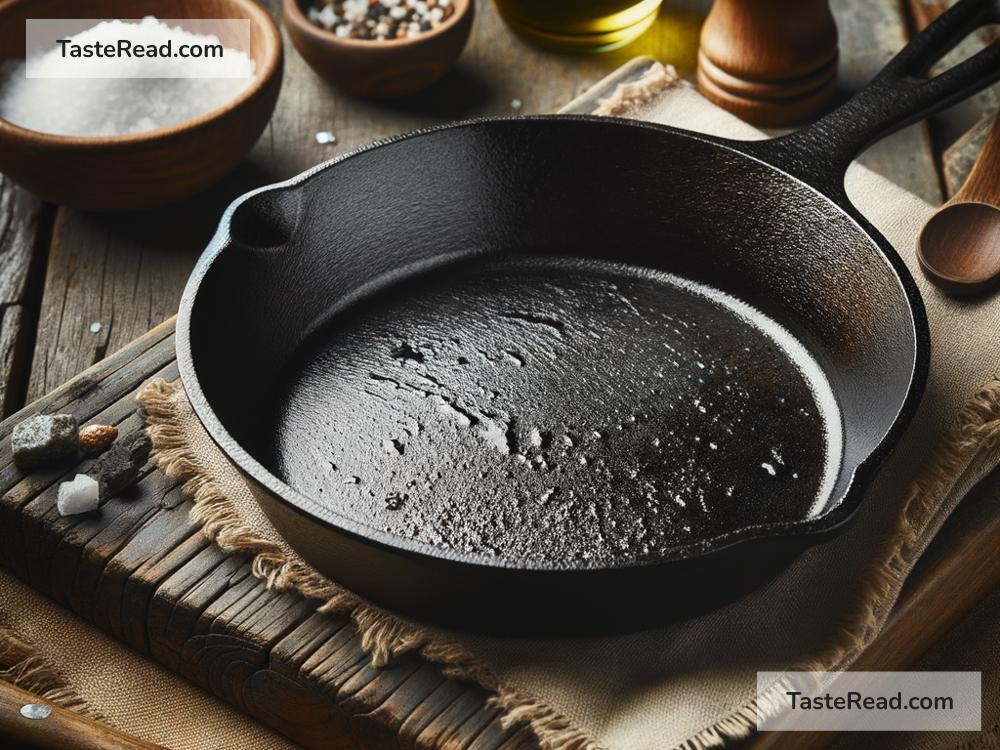How to Properly Clean and Season a Cast Iron Skillet: A Simple Guide
A cast iron skillet is a versatile kitchen tool that, if treated correctly, can last a lifetime. This heavy-duty cookware can go from stove to oven seamlessly and is perfect for everything from searing steaks to baking cornbread. However, the key to getting the most out of your cast iron lies in two crucial processes: cleaning and seasoning. Don’t let these terms intimidate you! With this simple guide, you’ll learn how to properly clean and season your cast iron skillet, ensuring it remains a beloved kitchen staple for years to come.
Cleaning Your Cast Iron Skillet
-
Do It While It’s Still Warm: Clean your skillet shortly after use. This makes removing leftover food bits easier and prevents rusting. However, avoid plunging a hot skillet into cold water as the drastic temperature change can damage it.
-
Use Mild Soap, Or Just Water: Traditional wisdom suggests avoiding soap on cast iron because it can strip the seasoning. However, a small amount of mild soap won’t harm your skillet, especially newer, pre-seasoned ones. If you’re unsure, stick to hot water and a sponge or stiff brush.
-
Scrub Away Stubborn Bits: If you’ve got stuck-on food, a paste of coarse kosher salt and water can act as a gentle abrasive. Use a sponge or a non-metal brush to scrub the skillet with this paste, then rinse thoroughly. An alternative is to boil water in the skillet, which can help lift off the stubborn bits.
-
Dry Immediately: Once clean, dry your skillet thoroughly with a towel. Leaving it wet can lead to rust. To ensure it’s completely dry, you may place it on a stovetop over low heat for a few minutes.
Seasoning Your Cast Iron Skillet
Seasoning is the process of baking oil onto the cast iron to create a natural, non-stick coating. This doesn’t just make cooking and cleaning easier; it also protects the skillet from rust.
-
Heat It Up: Preheat your oven to 350-400 degrees Fahrenheit. This step ensures that the skillet’s pores open up, allowing it to absorb the oil more effectively.
-
Apply Oil: Once your skillet is cool enough to handle but still warm, apply a thin layer of vegetable oil or shortening all over it, including the bottom and handle. You can use a paper towel or a clean cloth for this. Avoid using too much oil, which can lead to a sticky residue. Flaxseed oil is often recommended for seasoning because it dries harder than other types of oil, but any vegetable oil will do.
-
Bake It: Place the skillet upside down in the preheated oven directly on the rack. Place a sheet of aluminum foil or a baking sheet on the rack below to catch any drips. Bake it for an hour to bond the oil to the skillet. The heat allows the oil to polymerize and form a protective layer.
-
Cool Down: After an hour, turn off the oven and let the skillet cool down inside the oven. This slow cooling process further aids in the seasoning of the skillet.
Maintaining Your Cast Iron Skillet
After each use, following the cleaning steps mentioned and applying a very thin layer of oil before storing will help maintain your skillet’s seasoning. With time and regular use, your skillet will develop a darker, smoother patina, enhancing its non-stick properties.
To Sum Up
Getting the most out of your cast iron skillet doesn’t require much—just a little bit of care and attention. By properly cleaning and seasoning it, you ensure that this invaluable tool not only lasts a lifetime but also improves with age. Whether you’re frying up bacon and eggs on a lazy Sunday morning or baking a hearty cornbread to accompany dinner, a well-maintained cast iron skillet can handle it all, making it a cherished addition to any kitchen. Remember, every time you cook with your cast iron, you’re not just making a meal; you’re also seasoning it for future cooking adventures. Enjoy the journey!


